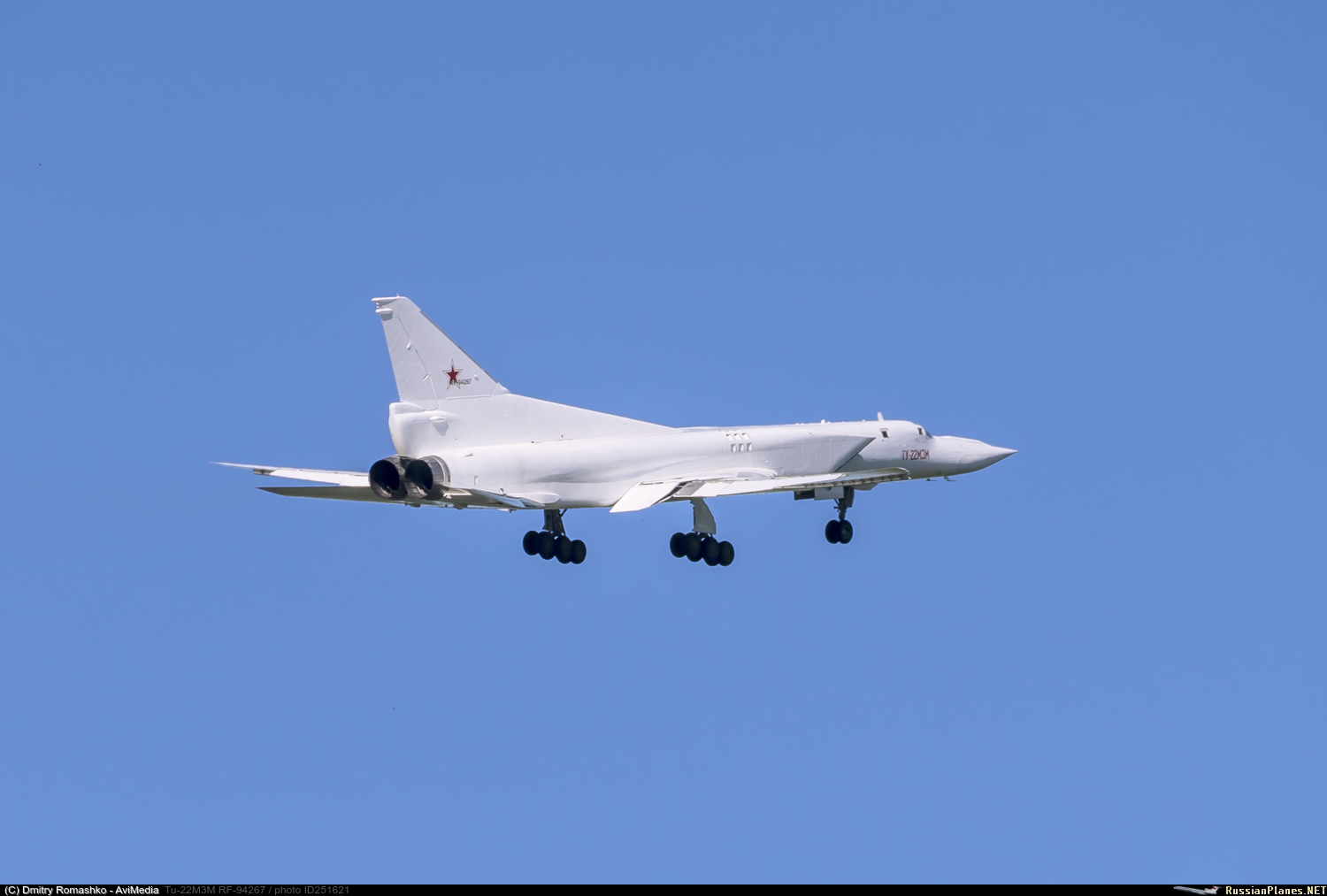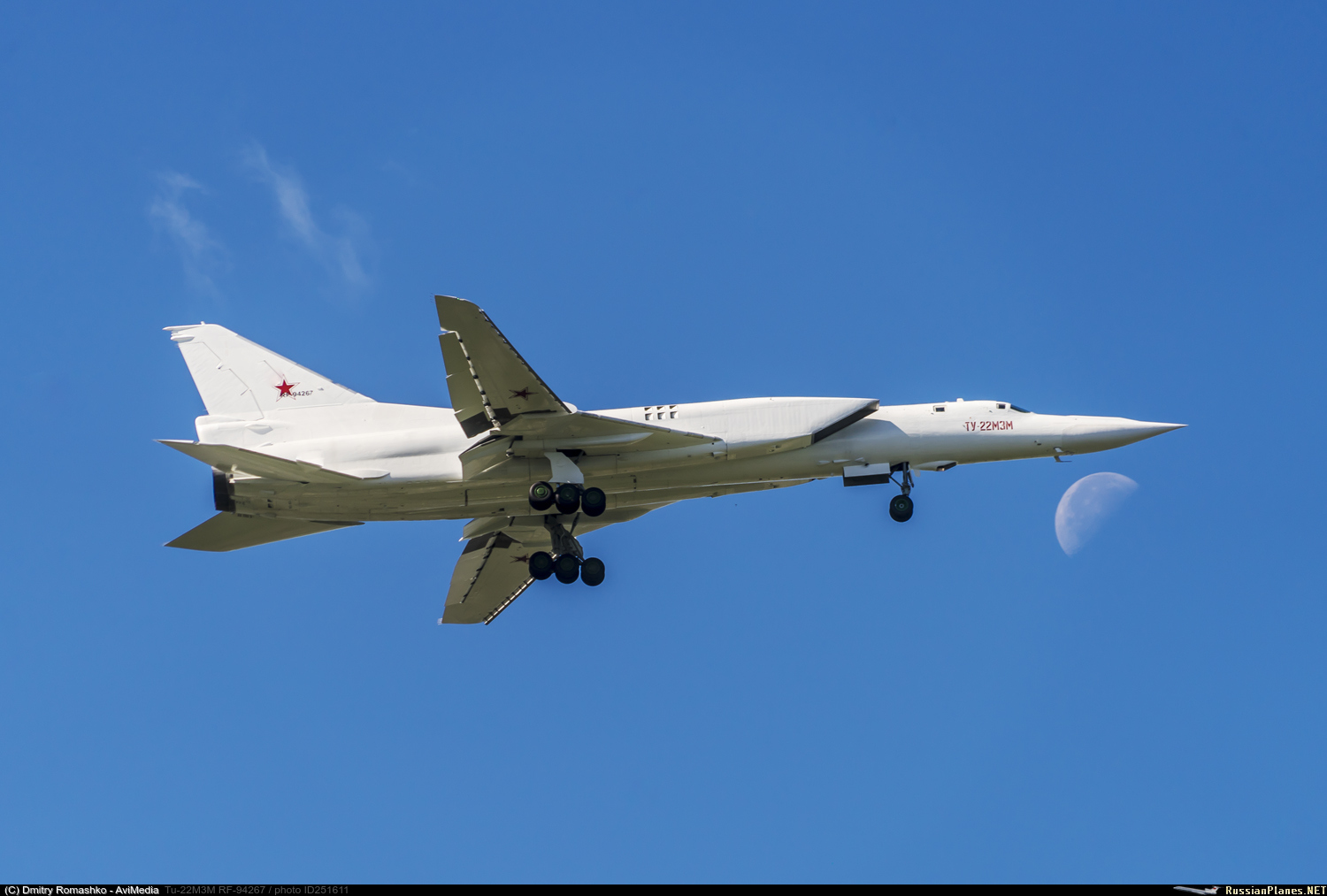There is a consideration to be made: PAK-DA, like its american counterpart B-21 will be a way smaller plane than the B-2: two engines and an empty weight just marginally superior to the Tu-22M3M one.
We really don't know that it will though will we... I mean its engine is supposed to be a high bypass engine based on the core of the NK-31, so its thrust could be rather high for a subsonic aircraft and we really have no idea if it will be a twin jet or a four jet engined aircraft.
Certainly two sets of twin jets spaced apart would leave plenty of internal volume for fuel and internal weapons bays big enough to carry very large conventional bombs and missiles.
I mean the father of all bombs will probably be about a 12m long weapon to be compatible with the Blackjacks weapon bays, so I would expect similar sized bays on the PAK DA... but it might have a centre line 12m long weapon bay and two sets of engines either side of that (one or two engines each) and then another set of weapon bays outside those also 12m long... in effect three Blackjack like weapon bays for weapons or fuel.
The intention of the aircraft is to both replace the Bear for long range subsonic strategic cruise missile attack, and also theatre range bombing roles to replace the Backfire with less internal fuel and more conventional bombs and missiles... so it will need lots of internal volume for either role.
Being subsonic means the wing can have a rather thick profile cross section enabling large internal weapon carriage and large volumes of internal fuel for longer ranged missions... the Backfire could carry up to 24 tons over theatre range missions of bombs, while the best Bear could carry up to 16 cruise missiles with 6 internal and 10 external on weapon pylons... of course being a stealth aircraft it would need internal carriage, but with three Blackjack like weapon bays that would be three times 6, which is 18 weapons... which is better than a Bear... but without the drag of external weapons.
Stealth would increase cost and complexity but so do also being supersonic capable, so one would compensate other.
Agreed, Supersonic planes burn a lot of fuel which makes them expensive to operate... they could even take advantage of the large internal volume and design access to most systems from internal panels rather than external panels that increase maintenance and support costs.
(Ie with an external panel you need to remove the RAM material and then unscrew the panel and find and correct the fault and then replace the panel and then tape up the panel joins and then paint over with RAM and then allow time to cure before the plane can be flown again... it explains why the F-35 requires so much down time for maintenance simply because accessing the electronics from external panels takes so much time and effort...)
In the meantime using the refurbished Kazan plant to built Tu-160M and to refurbish and upgrade Tu-22M3 instead than to wait idle until the PAK-DA would finish its own development would be the best thing to doo.
Well I don't think the plant will be idle... it will have Tu-160s to upgrade to M2 standard and of course 50 new Tu-160M2s to actually make... in addition to upgrading at least 30 Tu-22M3s to Tu-22M3M standard... possibly more if they like it.
As they introduce the Tu-160M2s into service they will transfer strategic bombing crews to the new plane... presumably from Tu-95s, so those Bears will become available for other roles... a Tu-22M3M type upgrade could easily be applied to these aircraft which are still relatively new... they were made in the late 1980s and 1990s and are no where near as old as the American B-52s... with modern up to date hardware and software and new weapons they would be rather capable for other purposes... the standard aircraft carries 10 Kh-101/-102 missiles on wing pylons and can carry 6 shorter Kh-555s in an internal weapon bay... extending that weapon bay so it can carry the larger new missiles would make it rather more capable, but even as it is it should be easily able to carry Zircon missiles in its internal bay and on its wing pylons without too much trouble... 16 Zircon missiles would be very potent... as a launch platform the Bear can't get as high as a MiG-31 or fly as fast but its range performance is excellent so those hypersonic missiles could be coming from any direction...
And they are cheap to operate... which is why they bothered to build new ones in the 1990s... without the forge for making enormous titanium structures that was in the Ukraine there was little to no chance of making new Blackjacks, but that has changed now too...
Also because on the other side all their current bombers are out production, so that they would not be able to increment their number in any way, if nor recuperating something from the Boneyard, like they have done with a B-52.
Well they are restarting production of the Blackjack... and I suspect the forged titanium structure for the swing wing box used in the Blackjack was the tricky part and why they hadn't made any more till now... this new forge could be used to make new stronger lighter Backfire box structures for its swing wing design to make even better Backfires if they wanted.
They justified building this new huge forge because they could use it to work with enormous pieces of titanium with no gaps... which is actually pretty ideal from the stand point of stealth... joints and corners are bad M'kay...

Perhaps a new air intake for the Backfire that is as efficient as the angled MiG-25 type ones but are more stealthy could be designed... from what I have read it greatly improved flight performance but also increased RCS from the front by something horrendous like 30%...
Personally, I think larger aircraft need an internal system which should be more capable than a podded one ....you can always add a pod for any specific situation when the internal one is not suited
Built in targeting systems are more generic and general purpose, whereas external pods can be optimised for a particular task and therefore carried for specific missions... perhaps with extra features those extra missions might require.
Much of the older pods added things that aircraft often got during upgrades anyway, like satellite navigation and communcations systems as well as range finders and IRST capability... most Russian aircraft already had IRSTs etc so for specialist aircraft they really didn't have much meaning.
For example the MiG-27K had the Kaira targeting system in its nose... I think from memory it was based on the system fitted to the Su-24, so you are putting on a light short range strike aircraft the EO system of a medium strike aircraft. The Kaira system in a pod carried by an Su-22 type would give your cheap simple strike aircraft capabilities normally only very expensive dedicated strike aircraft had...
Over time however new EO systems will be developed and retrofitted to your expensive aircraft, but podded versions could upgrade cheaper aircraft with the new tech faster and cheaper.
Very specialised pods could be used for specific missions on more expensive aircraft or on cheaper ones... it is quicker and cheaper to create a new weapon or sensor pod than to integrate new sensors for a specific aircraft to replace older equipment.







